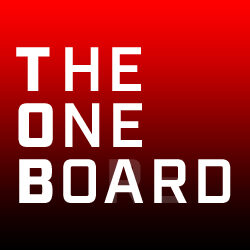This installment of The One Board originally appeared in Bowlers Journal International, June, 2022
One argument that is often used by bowlers as to why professional bowling isn’t as popular as we think it should be among the general population, many of whom are recreational bowlers—either regular league bowlers, fairly frequent let’s-go-have-fun bowlers or the huge number of bowl-once-with-friends folks—is that the scores in professional bowling are too high.
“If people at home see someone bowl 270, they’ll think bowling is too easy and not respect it,” one might say. “We need to put out tougher conditions so the best in the world are averaging 200 or so, at which point the people at home will become obsessed bowling fans.”
This is a misdirected argument. It’s a perfectly valid opinion for someone to hold right up until the point it’s directed at casual viewers. The discussion belongs within the highest levels of the game, where all the players can understand such an argument as they have to grasp the varying difficulties involved in posting certain scores under certain circumstances even to make it that far in their careers. Perhaps harder conditions would ensure a more accurate and fair result as to who wins the tournament, and perhaps not, but only those in the tournament would understand.
A casual fan sitting at home happening upon bowling show on television and seeing someone win with a 180 game will not react with respect and adoration for how difficult it was for that player to overcome the oil pattern and topography while repeating shots to within a quarter of an inch and picking up all his or her spares. The casual fan sitting at home will say, “I shot 190 once. I’m better than these people.”
Saying casual fans need to see lower scores to respect professional bowling and its players achieves the opposite effect: abject disrespect.
This is neither the fault of the players nor the fans. It’s the fault of one of bowling’s superb quirks: you have to get good enough to know how bad you are.
A once-a-year bowler has no idea how bad he is (nor does he care). Him seeing a pro on TV bowl 180 might even seem like a good score while 270 would seem impossible. Only when someone begins to work at the game and see improvement does he truly start to realize how bad he is.
With a bit of work, it’s not too difficult to get someone to improve from a 140 average to a 180 average, but once someone is in that 180-200 range, that person now knows enough to know how far he has to go to somehow get past 200 or higher. Adjustments. Spare shooting. Ball layouts. Surface application or removal. An advanced understanding of psychrometrics.
It’s at that point a player might start respecting the hard-earned clean 180 games of difficult pro bowling tournaments. Players like that, though, make up less than one percent of the television viewing audience. The rest are people with absolutely no understanding of the game, no idea how to keep score other than wondering why the pros don’t strike every time (even if they strike almost every time) and no worry at all about whether the oil pattern is challenging enough. They simply enjoy watching it, the same as most fans of every sport.
So, sure, the bowling community can continue discussing what the “proper” scoring pace is for any given tournament. But to think that is what will turn casual viewers into die-hard fanatics is, as stated previously, misdirected.
Still, it’s helpful to all of us at all levels of bowling to define the answer of which is better: 270 or 180? 270, obviously. By 90.


